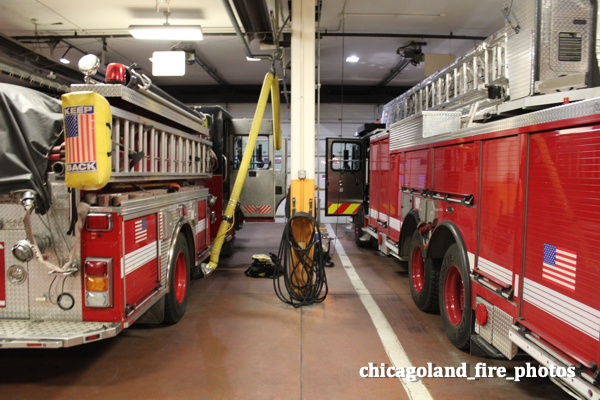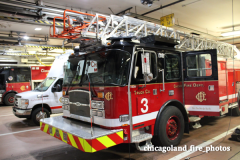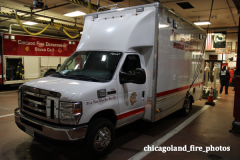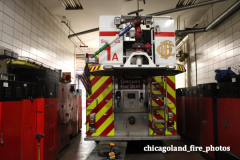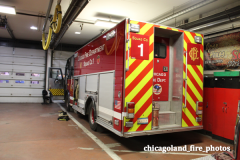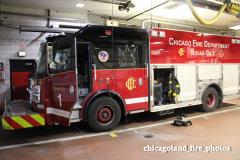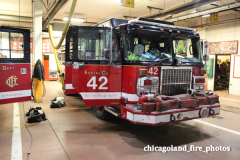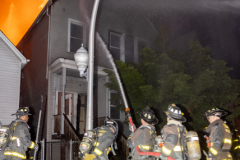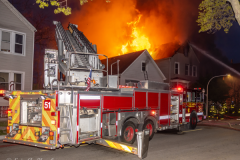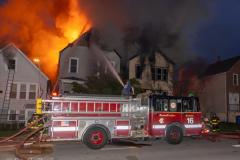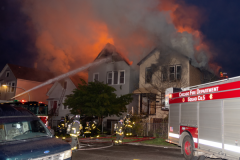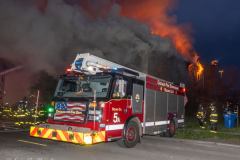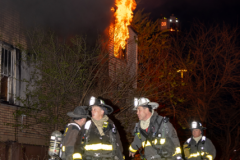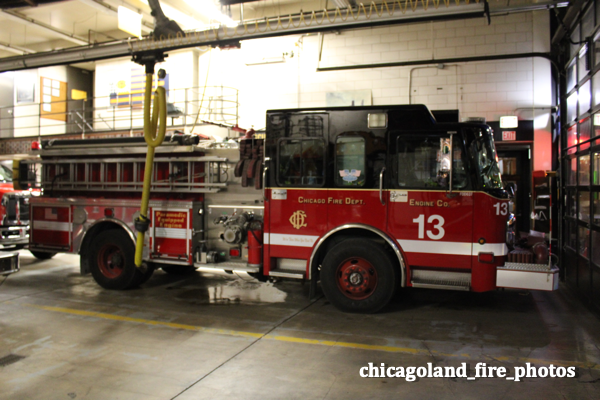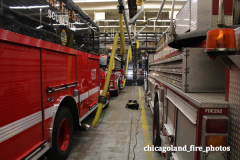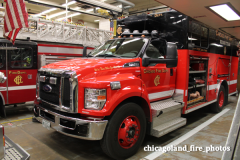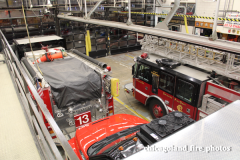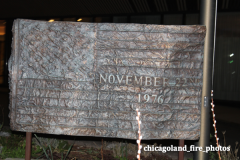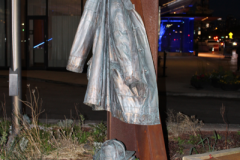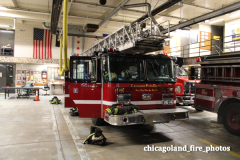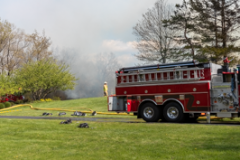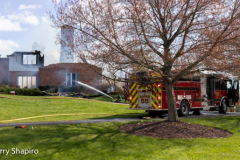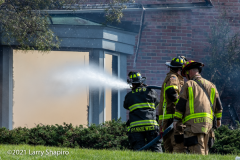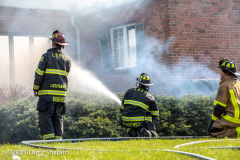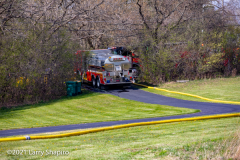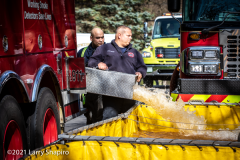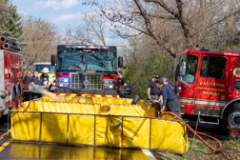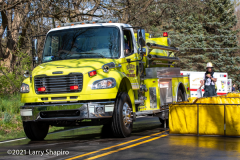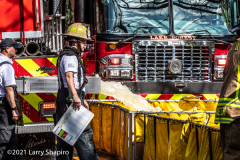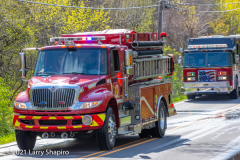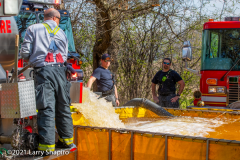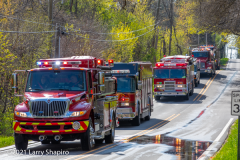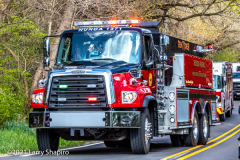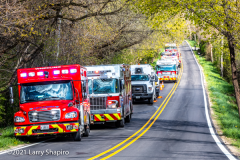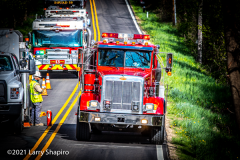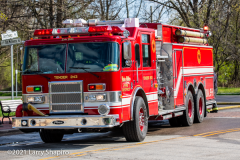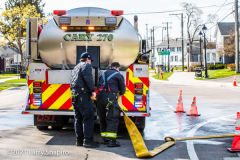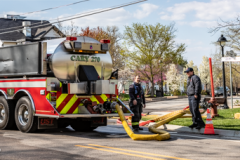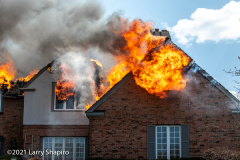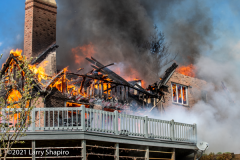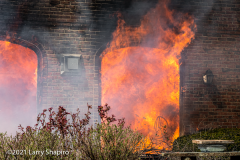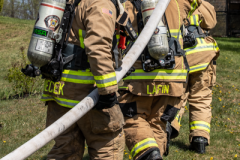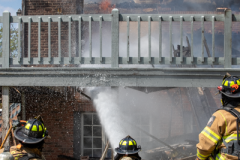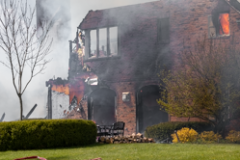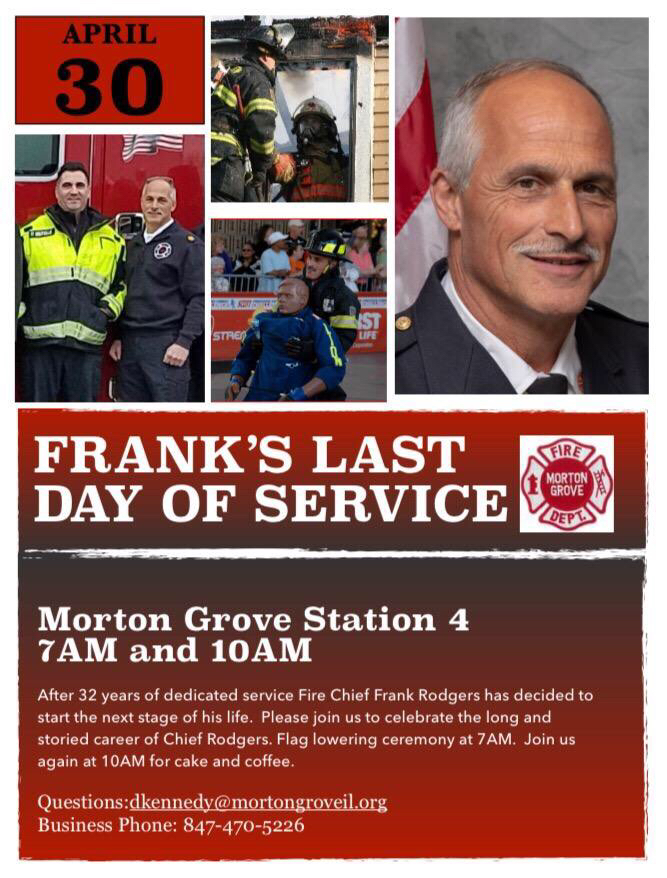
Archive for April, 2021
From Phil Stenholm:
Another installment about History of Evanston Fire Department
The Changing Face of Evanston
The geographical face of Evanston changed significantly in the years 1907-12. The North Shore Channel sanitary canal was constructed during those years, and the Evanston City Council mandated elevation for most of the railroad tracks located within the Evanston city limits.
Built by the Sanitary District of Chicago, the purpose of the North Shore Channel was to connect Lake Michigan at Wilmette Harbor to the north branch of the Chicago River at approximately Foster & Sacramento. By using water-flow from Lake Michigan, sewage could be flushed south from Wilmette and Evanston to a sewage reduction plant located at Howard Street. This meant that raw sewage would no longer be dumped into Lake Michigan off-shore of Evanston and Wilmette, thus helping to prevent typhoid fever and cholera outbreaks that had plagued the two North Shore suburbs from time-to-time over the years.
Meanwhile, the two railroads operating in Evanston at the time – the Chicago and North Western (C&NWRR) and the Chicago, Milwaukee, and St. Paul (CM&StP, or simply “The Milwaukee Road”) — were required to elevate their main-line tracks and build viaducts at certain locations from Howard Street to the Wilmette border.
The C&NWRR freight tracks – known as the Mayfair Division — did not require elevation south of Church Street, because those tracks were used to switch freight cars at manufacturing plants and warehouses located in west and southwest Evanston. Also, the Milwaukee Road tracks — which are now the CTA tracks — were only elevated as far north as Church Street at that time, after the CM&StPRR agreed not to run its trains north of downtown Evanston.
At 1 AM on Friday, April 26, 1912, the EFD responded to a report of a structure fire at Church & Dodge, and by the time companies arrived, they found multiple residences ablaze. The fire began in an unfinished residence belonging to Renaldo Roberti at 1819 Church Street, before communicating to the William Marion residence to the east at 1817 Church St. Marion’s daughter Pearl jumped from a second floor window into the arms of neighbor Emil Pavel, who had just carried his wife and daughter to safety from their residence at 1715 Dodge Ave. Evanston firefighters saved the Pavel residence, but flames claimed the Frank Kuzik residence at 1717 Dodge Avenue, the Lewis Titus residence at 1809 Church Street, and the Ludwig Veiter residence at 1807 Church Street, in addition to the Roberti and Marion residences.
High winds hampered firefighters battling the conflagration, but they did manage to prevent the flames from extending any further north and east, and were able to extinguish the blaze without any injuries to civilians or to firemen. This was the first time all three EFD engines —the Robinson motor engine, the American-LaFrance Metropolitan steamer, and the Ahrens Metropolitan steamer – were pumping at the same fire. The total aggregate damage to the residences was $11,250.
The Ebenezer A. M. E. church was firebombed in 1903 and two houses and a barn were destroyed by a blaze in the so-called “Italian settlement” at Dewey & Payne in 1911, but the 1912 multi-structure conflagration at Church & Dodge was by far the worst fire to date in the 5th ward. The 5th ward was home mainly to immigrants and African Americans at that time, and it was the poorest and most politically isolated ward in the city, without a significant business district, with no high-value residential properties, no university, and no border with the City of Chicago to give its aldermen the power to make common cause with aldermen from the other wards.
Without the leverage of the other six wards, the 5th was pretty much on its own when fighting political battles within the city council, and so when EFD Chief Carl Harrison recommended in 1912 that a fourth fire station be built at Emerson & Ashland – the bull’s eye center of the 5th ward at that time — there was no appetite for it in the city council, beyond that of the two 5th ward aldermen.
About a month later, on May 29, 1912, the entire Evanston Fire Department along with Chicago F. D. engine companies 70 and 112 battled an early-morning blaze at the Bogart Building at 1306 Sherman Ave. Firefighting efforts continued until well into the afternoon, as Evanston and Chicago firemen worked to extinguish the stubborn blaze. The Workers Cooperative Grocery store and the North Shore Creamery located on the first floor as well as apartments located on the second and third floors were gutted. The $16,700 in total damage made it one of the ten worst fires in terms of property loss in Evanston’s history up until that point in time.
During the Summer of 1913, a mechanical resuscitator known as the “Lung Motor” was placed into service at Fire Station # 1, and it was an instant success. The invention had been demonstrated at Evanston Hospital the previous October, and the Lung Motor was so successful that the Evanston Fire Department received a $25 award from the Life Saving Devices Company of Chicago as the “Top Life Savers in the Nation” at the end of 1913!
The EFD also responded to a number of mutual-aid requests for the Lung Motor received from other North Shore suburbs, and even occasionally responded with the Lung Motor to the Rogers Park neighborhood of Chicago.
While the Lung Motor was initially placed aboard the speedy Robinson auto-truck at Station # 1, inhalator runs were taking the motor engine out of service too much. So when an automobile police ambulance replaced the horse-drawn police ambulance in the bay located east of Fire Station # 1 in May 1916, a new joint police-fire policy began at that time which directed a fireman from Station # 1 to be detailed to ride with two police station officers in the police ambulance when responding to Lung Motor (inhalator) calls, thus keeping the motor engine available to respond to fires.
The first automobile Evanston police ambulance was built by William Erby & Sons on a White Motor Company chassis, and it was in service for eleven years before being demolished in a collision with a bus in September 1927. At that point, the inhalator was moved back to EFD Engine Co. 1. Then beginning in 1952, the inhalator was placed aboard the EFD’s new rescue truck (Squad 21), and inhalators were assigned to all five engine companies beginning in 1959.
As seen around … Chicago
Apr 26
This from Eric Haak:
Fire ripped through three homes, two of them occupied, early Saturday morning in Chicago’s Fuller Park neighborhood. The back porches of the primary fire building were fully involved on arrival and had already spread to both exposures. The alarm was raised to a 2-11 before being brought under control.

Eric Haak photo
As seen around … Chicago
Apr 25
This from Steve Redick:
Chicago Still Alarm Talcott and Oketo
From CFD Media on Twitter:
Still and Box fire elevated to a 2-11 at 4700 S Wells, Incident has been struck out, 1 civilian transport BLS with minor burns to hands, three adult displacement.
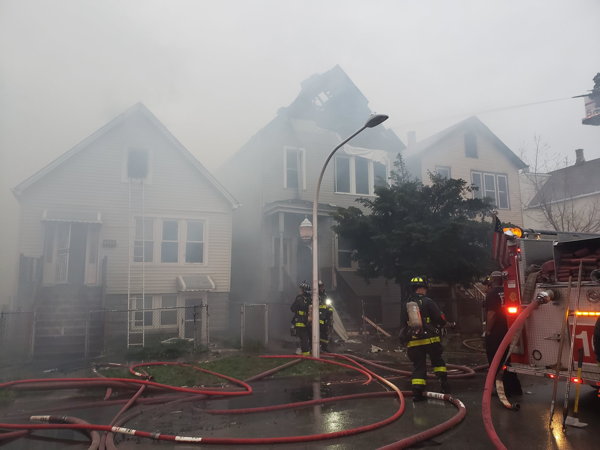
CFD Media photo
More from the 3-Alarm fire in Long Grove, 4-22-21
More photos from the 3-Alarm fire in Long Grove, 4-22-21
Just before 2:00PM on Thursday, (4/22/21) fire companies from Long Grove, Buffalo Grove, Palatine, Lake Zurich, Prospect Heights, Mundelein, the Countryside FPD, the Lincolnshire-Riverwoods FPD, Barrington, and Elk Grove Township were dispatched for a house fire at 3159 Cuba Road in Long Grove. Initial reports were of fire on the roof that the resident was attempting to extinguish. The 6,000 square foot home with a cedar shake roof is located roughly 1,000 feet from the road with a winding driveway and wooden bridge for access.
A dispatcher notified responding units that the homeowner had reportedly reentered the home, but was outside again when the first units arrived. Long Grove units saw fire from the attic in front of the house and from the rear as well upon conducting an initial size up. The alarm was upgraded to a working fire bringing more resources including several additional tankers.
An interior attack was made and found heavy fire inside the home before firefighters were forced to retreat and change to defensive operations. Long Grove Tanker 55 with 3,000 gallons of water and Squad 55 with 730 gallons were both in the driveway followed shortly thereafter by Lake Zurich Engine 324 with another 750 gallons after they dropped 750′ of 5″ hose up the driveway on their way in. The alarm was upgraded to a MABAS Box Alarm which later was upgraded to a 2nd and then a 3rd Alarm.
A deck gun was used to attack the fire until the initial 4800-gallon combined water supply was depleted while additional companies initiated a water supply from the street. Tankers shuttled water from two fill sites, one east and the other from the west.
At one point ammunition inside was heard exploding. Embers from the fire spread to the east starting several small brush fires. The wind-driven fire spread quickly and totally consumed the house which was completely destroyed.
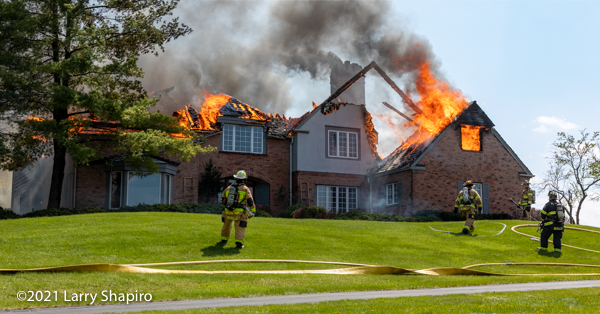
Larry Shapiro photo
An incomplete list of agencies at the scene includes:
- Long Grove FPD – battalion chief, chief, squad, tanker
- Buffalo Grove – chief, battalion chief, tower ladder, ambulance, MobileComm
- Prospect Heights – chief, tanker
- Lincolnshire-Riverwoods FPD – battalion chief, squad
- Deerfield-Riverwoods FPD – squad
- Palatine – squad
- Barrington – chief
- Barrington Countryside FPD – battalion chief
- Elk Grove Village – ambulance
- Mundelein – ambulance
- Wheeling – chief, ambulance
- Lake Zurich – engine, chief
- Mount Prospect – engine
- Highland Park – engine
- Gurnee – engine
- Lake Forest – engine
- Palatine Rural FPD – tanker
- Countryside FPD – tanker
- Grayslake FPD – tanker
- Elk Grove Township FPD – tanker
- Round Lake FPD – tanker
- Cary FPD – tanker
- Lake Villa FPD – tanker
- Nunda Rural FPD – tanker
- Fox River Grove FPD – tanker
- Wauconda FPD – tanker
- Northbrook – tower ladder
